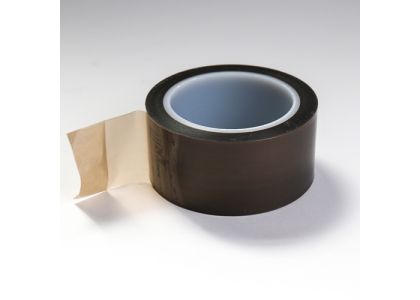
Noise pollution is an often-overlooked aspect of machinery operation, yet it can significantly impact workplace environments, employee productivity, and equipment efficiency. One of the innovative solutions to address excessive noise in machinery is the use of PTFE film tape. This blog explores how PTFE film tape can effectively reduce noise levels and improve the performance of machinery, leading to enhanced operational efficiency.
Machinery generates noise for various reasons, including mechanical vibrations, friction between moving parts, and air turbulence. Over time, high noise levels can lead to operator fatigue, hinder communication, and result in regulatory compliance issues. Addressing these noise factors is crucial not only for worker safety but also for the longevity of the machinery.
PTFE (Polytetrafluoroethylene) film tape, particularly skived Teflon tape, has unique properties that make it suitable for noise reduction in machinery. This tape provides a cushioning effect, which can absorb vibrations and dampen sound transmission. Here are some of the primary mechanisms through which PTFE film tape contributes to reducing noise:
Vibration Damping: The inherent flexibility of PTFE film tape allows it to absorb vibrations effectively. When applied to surfaces where vibrations occur, it prevents these vibrations from transferring to other machine components, significantly lowering noise levels.
Friction Reduction: PTFE is known for its low coefficient of friction. By applying best quality skived PTFE film to areas where contact occurs—such as bearings, gears, and sliding surfaces—users can reduce friction, which in turn minimizes the noise generated during operation.
Thermal Stability: PTFE film tape can withstand high temperatures without degrading, making it ideal for various applications. This thermal stability ensures that the tape maintains its noise-reducing properties over time, even in high-temperature environments.
In a manufacturing facility in South America, management noticed heightened noise levels emanating from several machines on the production line. Workers reported difficulty in communication, and the noise levels occasionally exceeded regulated limits, prompting an investigation into potential solutions.
The manufacturing engineers decided to apply PTFE skived tape for electrical insulation and noise reduction at critical points throughout the machinery. They focused on:
Motor Housings: Applying PTFE film tape around the motor housings helped absorb motor vibrations that were previously transmitted to the machine frame, significantly reducing the overall noise output.
Conveyor Belts: The tape was used on the supports and contact points of conveyor systems, effectively reducing friction and noise during operation.
The results were impressive. After implementing the changes, noise levels dropped by over 30%, improving overall workplace conditions and employee comfort. Furthermore, the maintenance teams noticed decreased wear on machinery components, leading to longer operational lifespans and reduced downtime.
A well-known company in the United States specializing in HVAC (Heating, Ventilation, and Air Conditioning) systems faced excessive noise production from their equipment, leading to tenant complaints in commercial buildings. The management sought an effective solution.
The engineering team assessed the situation and recognized that vibrations from the compressors were the primary source of noise. They employed high-quality PTFE skived tape to dampen these vibrations and improve insulation around the compressor units. Key actions included:
Insulating Compressor Mounts: The team wrapped the mounts with PTFE film tape, which absorbed vibrations and significantly reduced the sound transmitted through the building structure.
Sealing Connections: Using PTFE tape to seal joints and connections minimized air leaks, contributing not only to noise reduction but also to improved system efficiency.
After implementing these changes, noise complaints dropped dramatically, and the HVAC systems operated more efficiently. The company benefitted from increased tenant satisfaction and decreased maintenance costs due to improved reliability.
An office equipment manufacturer in Europe sought to improve the noise levels of their printing devices, which had recently become a significant distraction in open-plan workspaces. High noise levels not only disrupted employee focus but also decreased productivity.
The office manager decided to use PTFE skived tape for noise reduction. Specific steps included:
Printer Cartridges: Wrapping certain printer components with PTFE film tape helped absorb vibrations caused by the mechanical movement of the printers, resulting in noticeably quieter operation.
Rolling Mechanisms: The tape was applied to rollers and other moving parts to reduce friction, which not only decreased noise but also improved the performance and reliability of the printers.
These measures resulted in a significant reduction in noise levels, creating a more conducive working environment. Employees reported better focus and productivity levels, showcasing the broader benefits of integrating PTFE tape into office machinery.
The use of PTFE film tape presents an effective strategy for reducing noise in machinery across various industries. Its ability to absorb vibrations, minimize friction, and withstand environmental stresses makes it an invaluable resource for enhancing both performance and operational efficiency.
Every case presented demonstrates how PTFE skived tape quality can lead to significant improvements in workplace conditions—from manufacturing facilities in South America to HVAC systems in the United States and office environments in Europe. By partnering with a reputable skived Teflon tape factory, companies can ensure they acquire the best quality products to meet their noise reduction needs.
As industries continue to focus on enhancing workplace conditions and operational efficiencies, PTFE film tape will likely play an increasingly prominent role in noise management solutions. This emphasizes how innovative materials can lead to significant improvements in both machinery performance and employee satisfaction.